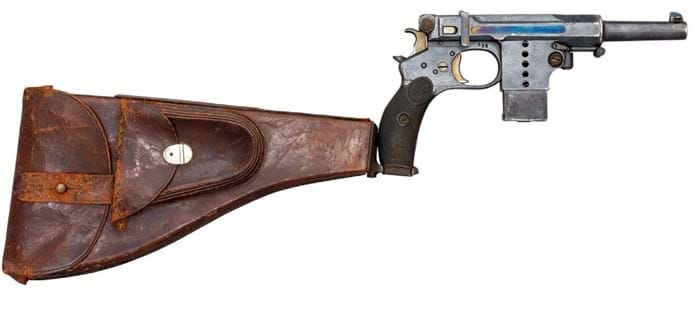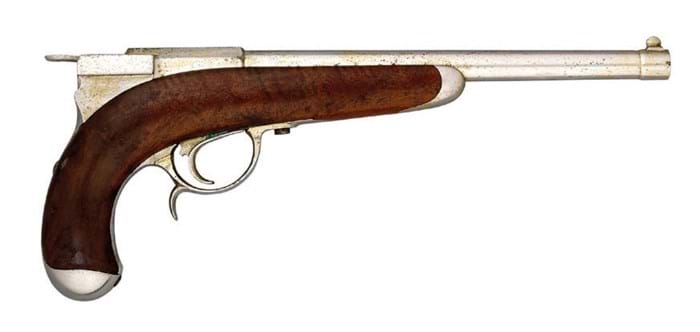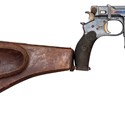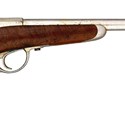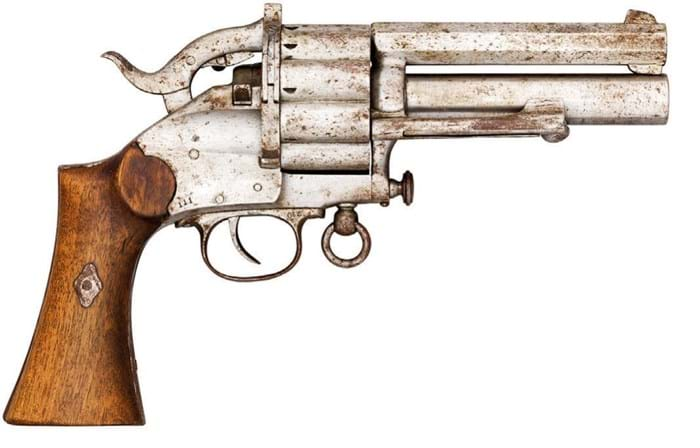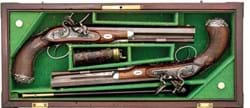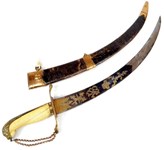For example, there were no fewer than five examples of the slab-like self-loading pistol developed by the German bicycle and car manufacturer Theodore Bergmann in the late 19th century. Known as the 1896 Model, this gun was produced in three calibres and sold reasonably well, though the total production was in the low thousands.
It had a blowback action, meaning that part of the energy developed by the cartridge was used to eject the old cartridge case, re-cock the hammer and chamber the next round. The magazine of five cartridges was housed behind a hinged plate in front of the trigger.
The rarest of the three was the 8mm calibre No 4 model and two examples took £2800 and £2400. A 6.5mm No 3 model took £1700 and a 5mm No 2 model £2000.
If this Bergmann design looks strange to us today, it is because it never achieved the success of the German Luger and the American Colt M1911, both of which incorporated the cartridge magazine in the pistol grip.
Lucrative market
In an attempt to gain access to the much more lucrative military market, Bergmann went on to patent the 1897 7.8mm No 5 self-loading pistol . This weapon had a more conventional-looking slide-in 10-shot magazine and the locking breech mechanism necessary to make use of a more powerful military cartridge.
Though the Swiss and the British armies both considered the Bergmann No 5, it was never taken up and only around 800 were produced. Many were supplied with the combined holster/ shoulder stock also shown here. Its rarity was reflected in a price of £10,500.
Another rarity from the collection was a 9mm 1854 pin-fire rifled pistol. Though its overall form harks back to the age of the flintlock, the sleekness of its apparently hammerless design and the fact that it was chrome-plated throughout made it a futuristic weapon in the 1850s.
It is a rarity, having been issued only to Napoleon III’s elite bodyguard, Les Cent Gardes. It was designed by Baron Treuille de Beaulieu with a patent breech-loading pinfire cartridge discharged through a four-groove rifled barrel.
Along with the pin-fire carbines design by Treuille for the Cent Gardes, these pistols can claim to be the earliest military metal-cartridge weapons.
What they might make if they were of more interest to American collectors is an interesting question, but last December this pistol more than doubled its estimate to take £7800.
Examples of the first and second models of the Treuille carbine sold at Thomas Del Mar for £5400 and £6800 respectively in June 2016.
While Le Treuille was developing his breech-loading thoroughbreds for the Emperor’s Guard, other inventors across the Western world were beginning to vie for the mass market with multi-shot pistols of many types.
Curious combination
One of the curiosities of the decade was the combined revolver and buckshot pistol designed in a wide variety of calibres and forms by Dr Jean Alexandre Le Mat.
The best known of these Le Mat revolvers were a consignment of percussion models used by the Confederate cavalry during the American Civil War.
Pinfire cartridge models followed and this Thomas Del Mar collection included a late centre-fire cartridge model.
This was a heavy man-stopping weapon in 11mm calibre, with a nine-shot cylinder and a separate 22-bore shot barrel discharged by adjusting the pivoting nose of the hammer. It sold for £4000.


